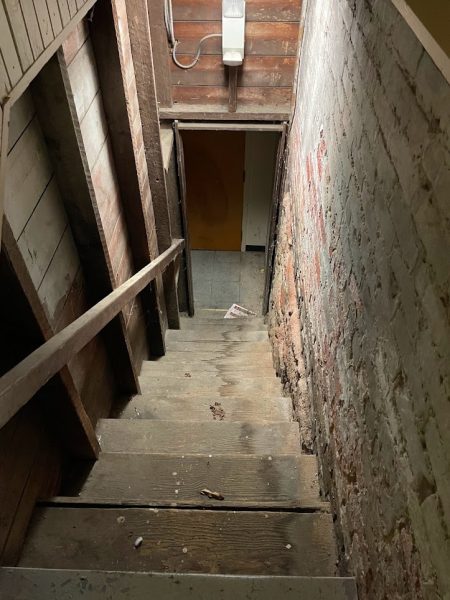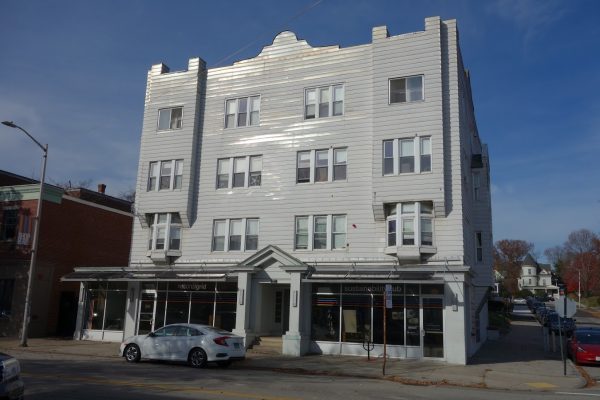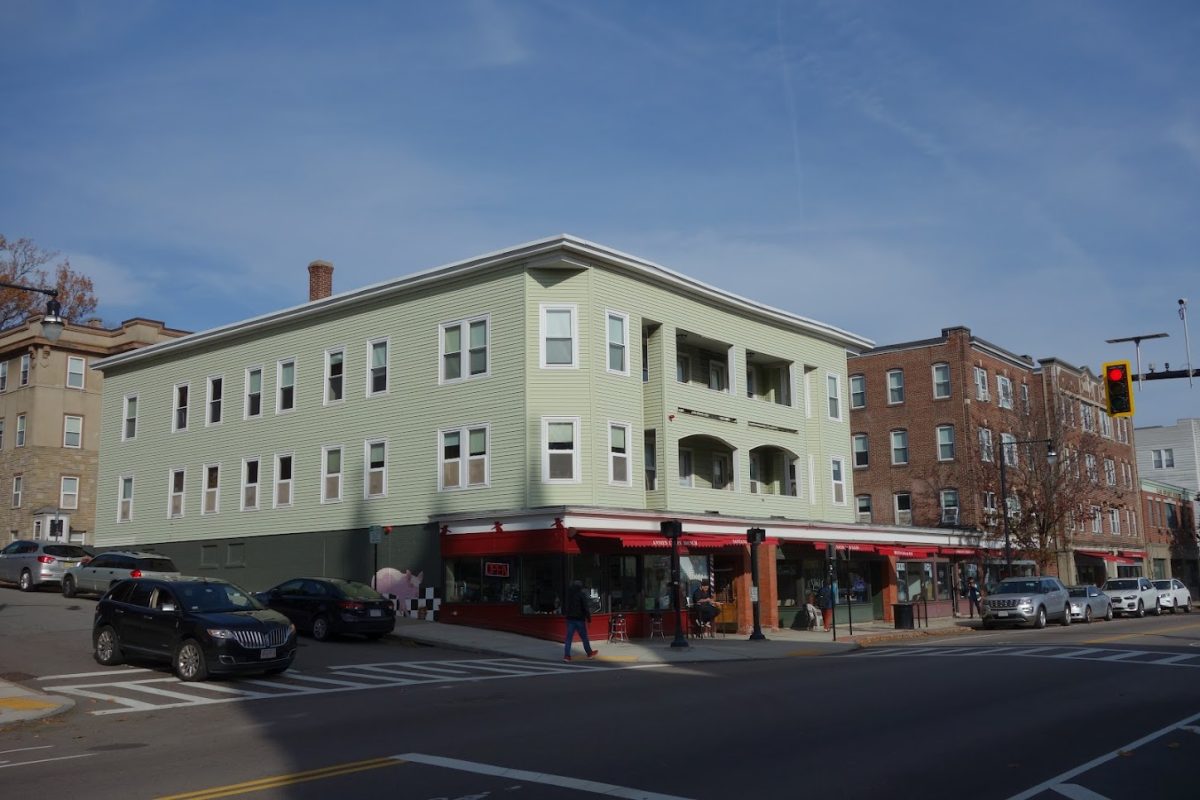Inspiration Strikes
On May 18 of this year, University President David Fithian released A Vision for Our University, a letter summarizing goals of Clark Inspired.
Clark Inspired is a strategic framework developed by faculty and staff to evolve the university. Strategic framework refers to a blueprint or a vision board for the goals an institution wants to achieve.
There are 5 Main Goals:
- Academic and Research Excellence.
- Greater Diversity, Equity, and Inclusion.
- Enhance Campus Experience.
- Impactful Outward Engagement.
- Broader Institutional Capacity.
Fithian believes student residential experience will be enhanced through these goals.
He stated in the letter, “we need to create better housing options, which I propose to start to do through a redevelopment of Clark’s buildings on Main Street [between Hawthorne and Woodland Streets].”
The first stage of the Main Street Housing Improvements, known as the Main Street Block, is to demolish 928, 930 and 934 Main Street.
The full project includes 1 Hawthorne, 918, 914 Main Street and 157 Woodland as well as the Main Street Block. Set to break ground summer 2024, students living there now are the final occupants.
Student Outcry and Turmoil
Outcry came in early this August, when an Instagram account called @savemainstreetsouthblock circulated on student feeds. The anonymous account asks people to “please sign this petition and help save the small local business of the South Block of Worcester and support the preservation of historical buildings.”
They amassed hundreds of signatures, with students reposting and rallying for preservation. It is useful to quote the petition at length:
“The students have openly voiced their opinions of wanting to preserve these buildings and businesses and wanting to keep the already available student housing on this block. By just creating new student housing, Clark University is outright ignoring already existing problems in the current dorms on campus.”
What causes such a strong reaction to a project? And what are the impacts of building a new dorm not just on students, but on the neighborhood as a whole?
How the drywall crumbles
An argument the petition makes is for the preservation of buildings and their historic status. But just because a building is old doesn’t mean it needs saving. These are not preserved gems of Worcester architecture. Decades of college students and deferred maintenance have left them in rough shape.
I interviewed David Chearo, Vice President for Planning and Chief of Staff, about the project. When asked about some of the issues in the buildings, Chearo said, “there’s aging infrastructure, the buildings leak, suffer electrical failure, water failure all the time. There’s rodents.”

Despite these issues, Chearo said “the apartments themselves are livable. We wouldn’t have students there if they weren’t. But they’re not what you want to be able to offer to your students as a place to live and study productively.”
A well-known issue is that Clark has a housing problem, in quantity and quality. This fall, enrollment went up again, welcoming the largest freshman class for the second year in a row. Dorms are at 103% capacity with some graduate students living at Worcester State University, while many freshmen are forced into triples.
A new dorm hasn’t been built since Blackstone Hall in 2006, and the Main Street project won’t be done until Fall 2026. That’s a 20-year gap building between dorms at a university accepting larger and larger freshman classes.
Bullock and Wright Hall were remodeled in 2010. New carpet was laid, elevators were put in and study spaces were added. Many of those study rooms have now been converted to bedrooms. However, it did not significantly impact the amount of housing available. Unless, of course, you count forced triples.
Rebuild vs. Renovate
So why doesn’t Clark just renovate the Main Street block?
If Clark renovated the buildings, the number of beds would go from 117 to 275, whereas the proposed new construction would have room for over 500 beds. When asked what would happen if Clark decided to save some of the buildings, Chearo responds, “what happens when you do that is that you’ve increased costs all around, because now you’re building two, three separate buildings and renovating some old ones. And the cost per square foot and cost per bed goes up astronomically.”
Renovations would still leave the buildings inaccessible and not add a significant amount of space.
I also spoke with Joseph Corazzini, Vice President for Government and Community Affairs, who reminded us of an important fact of renovation: “students still have to leave.” And it’s not clear where they’d go.
There is no solution without impact.
Worcester at Large
Worcester is dealing with its own housing crisis, and Clark students actively participate in the city’s housing market. When asked about how students moving off-campus impacts the community, Corazzini said:
“We have a huge influx of new immigrants that are coming into the city…hotels in the city are full with families who are experiencing homelessness. So there’s this growing, growing call for more accessibility of affordable housing.”
Main South remains one of the semi-affordable neighborhoods in Worcester. However, a lot of the housing stock – especially in high density triple-deckers – are taken up by Clark students.
Moving off campus is often cheaper and allows for more freedom than a double in the Johnson Sanford Center. Increased competition makes housing scarce and drives up rent prices.

Sharing Space
Community events and programs were held in order to explain what the project was going to look like. Most concerns lie in the day-to-day impact of the project.
One issue is parking. Built before the production of cars, triple deckers lack the space for the one car per family lifestyle of Americans. Even Clark’s parking garage and its myriad commuter lots are not able to effectively mitigate cars spilling out into the street.
A concern shared by both residents and students is the fate of the businesses. “There’s still some things that we’re working on in terms of individual businesses, requests that they’ve made that we’re trying to figure out a way to meet that may keep them- at least a few of them – somewhat active on campus throughout the two year period,” said Corazzini
This could look like Belen Casa de Pan being used for events or catering from New China Lantern. However, Clark has NDAs with the businesses and has not fully finalized the next step.

Seeking Prosperity
The net benefit of creating housing far outweighs the negatives from destroying the buildings. Residents want to stop their rent prices from going up. Students were upset because they were misinformed. Ironically, trying to preserve Main South meant instability for residents.
I, however, do not blame students for this knee-jerk reaction. Improving campus infrastructure creates the ability for future expansion. A pretty campus attracts donors.
But this is a necessity for many small universities like Clark that depend on alumni donations.
New projects will still benefit students, even with ulterior motives. Simply having more beds would alleviate the housing crisis at Clark and remove the rat race that normally comes with housing selection. And then maybe we’ll be able to get rid of forced triples.

